AYESHA RASCOE, HOST:
It’s that time of year.
(SOUNDBITE OF SCHOOL BELL RINGING)
RASCOE: Kids are heading back to class, and that means parents are spending big on notebooks, pencils, crayons and other back-to-school supplies. I’ve got three little students of my own, and I know I have been shelling out for them. Well, we’re going to go to school right now ourselves with NPR’s retail expert, Alina Selyukh, and our chief economic correspondent, Scott Horsley. Good morning.
ALINA SELYUKH, BYLINE: Hello, hello.
SCOTT HORSLEY, BYLINE: Good morning.
RASCOE: So, Alina, let’s start with you. Like, what do stores expect from this year’s back-to-school season?
SELYUKH: Another record – the National Retail Federation says families of school kids on average are expected to spend $890 on back-to-school stuff. This is supplies, clothes and shoes. And that is $25 more than last year’s record. Part of it is inflation. And a little part of it has to do with what we are buying. This year compared to last year, the retail trade group found more people are saying they are buying electronics, which are pricey.
RASCOE: Yeah. I’m not buying electronics, but it was lots of notebooks and binders and markers, Post-it notes. It all adds up for three children.
SELYUKH: Eight hundred ninety dollars, perhaps?
RASCOE: I don’t know. It was a lot of – the cart was very full, and then I – we’re not even talking about clothes. Scott, school supplies aren’t the only thing that people have to buy. So how does this fit in with other spending?
HORSLEY: People are definitely spending. Retail sales rose seven-tenths of a percent last month, which easily outpaced inflation. We keep looking for consumer spending to lose a little steam at some point, especially as lower-income families run out of those savings they built up early in the pandemic. But we’re not really seeing any slowdown yet. People are still spending a lot of money on experiences like dining out, entertainment. In some cases, they are putting that spending on the credit card. Credit card balances topped a trillion dollars for the first time this spring. But when it comes to buying stuff, we are hearing from some retailers that people are mostly shelling out for stuff they need, like those back-to-school supplies, and not so much on things that would just be nice to have.
SELYUKH: Clothing stores overall have had a tough year, but discounted clothing stores like TJ Maxx and Ross are doing pretty well. So people are still interested in nice-to-have things like name-brand clothes but preferably on sale.
RASCOE: So are there other weak spots out there, things where people have kind of pulled back on their spending?
HORSLEY: We’ve definitely seen a slowdown in purchases tied to housing. You know, mortgage rates have hit their highest level in more than two decades, nearly 7.25% this past week, so fewer houses are selling. And when housing sales drop off, you tend to see a slump in furniture and appliance sales, as well.
SELYUKH: We definitely have home improvement stores talking about this a lot. Lowe’s and Home Depot are saying that professional contractors are still spending a bunch for, you know, routine repair and maintenance projects that you can’t avoid. This is helping to offset losses from people buying fewer appliances, for example. Executives also say they believe shoppers are delaying big home improvement projects. Here’s what we heard from Lowe’s CEO Marvin Ellison.
MARVIN ELLISON: Looking ahead, it’s encouraging to consider that home improvement projects are typically postponed rather than canceled.
SELYUKH: We know many people did a lot of home renovations earlier in the pandemic, and many are probably waiting for prices or interest rates to fall.
RASCOE: Personal spending is the biggest driver of the overall economy. But can we afford to keep this level of spending up? And, you know, don’t make this personal, though (laughter).
SELYUKH: That’s – that is a big question. This week, we did hear Macy’s say that it’s been seeing more people delinquent on their store credit card payments. We could see another crunch this fall when student loan payments, which were deferred during the pandemic, are expected to kick back in.
HORSLEY: Overall, credit card delinquencies had been very low for the last few years, in part because of that savings cushion that people have been up. Now we have seen delinquency rates inch back to about where they were before the pandemic struck. And I mentioned those rising credit card balances. If you don’t pay off your balance every month, this is very costly credit. The interest rates are typically topping 20%.
RASCOE: So isn’t the Federal Reserve trying to put the brakes on spending? That’s what we keep hearing. You know, isn’t that why the central bank’s been raising interest rates?
HORSLEY: That’s right. The Fed is trying to tamp down demand in order to get inflation under control. And inflation has come down, which is good. Wages are now climbing faster than prices, so people have seen their real spending power go up. But if spending picks up too much, that could reignite inflation. And that’s something Federal Reserve Chairman Jerome Powell warned about at Jackson Hole this past Friday.
(SOUNDBITE OF ARCHIVED RECORDING)
JEROME POWELL: We are attentive to signs that the economy may not be cooling as expected. So far this year, GDP growth has come in above expectations and above its longer-run trend. And recent readings on consumer spending have been especially robust.
HORSLEY: So the Fed’s also going to keep a close eye on spending. And if it gets too hot, that could be a reason for another hike in interest rates later this year.
RASCOE: Scott Horsley and Alina Selyukh, thank you so much.
SELYUKH: Thank you.
HORSLEY: You’re welcome.
Copyright © 2023 NPR. All rights reserved. Visit our website terms of use and permissions pages at www.npr.org for further information.
NPR transcripts are created on a rush deadline by an NPR contractor. This text may not be in its final form and may be updated or revised in the future. Accuracy and availability may vary. The authoritative record of NPR’s programming is the audio record.
Read the full article here














